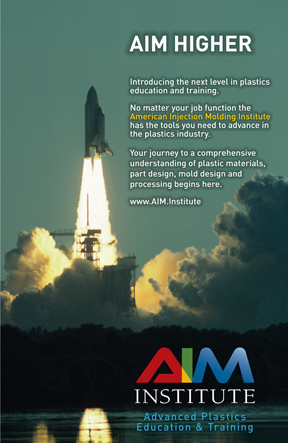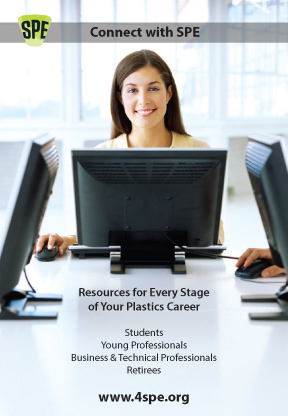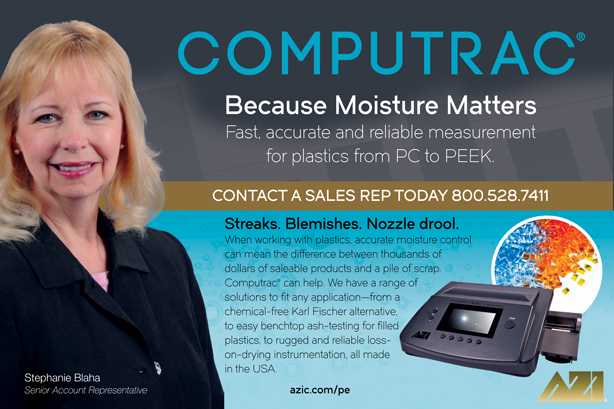Chemical-Resistant TPE Materials with Adhesion to Engineering Thermoplastics
Previous Article Next Article
By Florian Vetter1 and Sehyun Kim2
1Kraiburg TPE GmbH & Co. KG, Waldkraiburg, Germany
2Kraiburg TPE Corporation, Duluth, Georgia, USA
Chemical-Resistant TPE Materials with Adhesion to Engineering Thermoplastics
Previous Article Next Article
By Florian Vetter1 and Sehyun Kim2
1Kraiburg TPE GmbH & Co. KG, Waldkraiburg, Germany
2Kraiburg TPE Corporation, Duluth, Georgia, USA
Chemical-Resistant TPE Materials with Adhesion to Engineering Thermoplastics
Previous Article Next Article
By Florian Vetter1 and Sehyun Kim2
1Kraiburg TPE GmbH & Co. KG, Waldkraiburg, Germany
2Kraiburg TPE Corporation, Duluth, Georgia, USA

Figure 1: VDI 2019 test specimen.

Figure 1: VDI 2019 test specimen.

Table 1: Material Properties

Figure 2: Peel test curves.

Figure 3: Change of weight and volume after immersion in sebum for 14 days at 23°C.

Figure 4: Change in mechanical properties after immersion in sebum for 14 days at 23°C.
The demands on soft TPE materials are growing constantly.1 Such materials are used for gaskets, handles, and functional parts, i.e., inside and outside of electronic devices. When these materials are used outside of a device, in most cases, they come in contact with substances like skin oil, sunscreen cream, hand lotion, etc. The requirements for materials used in the described applications include:
- a hardness range of 50 to 70 Shore ‘A’,
- good chemical resistance to the substances mentioned above,
- adhesion to engineering thermoplastics like polycarbonate and acrylonitrile-butadiene-styrene (ABS),
- color fastness,
- good wear resistance, and
- easy handling using standard molding machines.2,3
Additionally, a silky and high-value-like surface touch is strongly demanded by the market.
Conventional TPE materials based on styrenic block copolymers (SBC), i.e., TPS, are attacked by non-polar chemicals that exist in sebum and/or skin-care products. As a result, TPS-based materials become swollen and their mechanical properties decline during the product life cycle. Also, the surface feel of the TPS molded article is rubbery.
The alternative materials to TPS are neat engineering TPEs such as thermoplastic polyurethane elastomers (TPUs),4thermoplastic copolyester elastomers (TPCs), liquid silicone resin (LSR), and alloys of cross-linked silicone and TPU. Those materials offer better chemical resistance compared to TPS.
TPU products having a hardness range of 50 to 70 Shore ‘A’ tend to become yellow upon exposure to sunlight due to poor UV (ultraviolet light) resistance. Furthermore, the injection molding of these materials is challenging due to poor processability.
TPC material is also known for its high chemical resistance. Since the lowest hardness commercially available in the market is 76 Shore ‘A’, TPC cannot be used for this kind of application.
LSR offers very good mechanical properties, combined with excellent chemical resistance at a low hardness range. However, since molding LSR involves a cross-linking reaction, its cycle time is relatively long in comparison to conventional injection molding processes, and special equipment is necessary to process LSR, thus increasing production costs.
Blends of pre-crosslinked silicone resin dispersed in a TPU matrix can be molded using a standard molding machine. However, their chemical resistance is relatively poor in comparison to TPU and TPC resin.
As an alternative, Copec® is a series of engineered alloy materials formulated to meet the requirements for applications in the consumer electronics market.
Experimental
Materials were produced by using a twin screw extruder with a screw diameter of 50 mm and an L/D ratio balanced for the specific product. The screw rotation speed was 600 min-1. The compounding temperature was maintained below 240°C.
Prior to molding the test specimens, the materials were dried for a minimum of two hours at 80°C. Plaques with dimensions of 125 × 125 × 2 mm and 70 × 70 × 6 mm were injection molded using an injection molding machine equipped with a standard polyolefin screw with a diameter of 40 mm and an L/D ratio of 20. The barrel temperature used was 200°C and the mold temperature 35°C. The injection rate was 38 mm³/sec.
For the adhesion test specimens, a two-shot injection molding machine was used. A hard substrate of 150 × 60 × 2 mm was molded first, and a stripe of a TPE of 160 × 20 × 2 mm was subsequently overmolded onto the hard substrate as shown in Figure 1, using a screw diameter of 40 mm and an L/D ratio of 20. The barrel and hot runner temperature was 200°C, and the mold temperature was 60°C. The injection rate used was 40 cm³/sec.
Hardness was measured according to ISO 7619 on three stacked 2-mm plaques. Density was determined according to ASTM D 792, and the mechanical properties according to DIN 53504. The abrasion test was conducted as prescribed in DIN ISO 4649. The adhesion force was determined via a peel test using the VDI 2019 method by peeling the TPE off the hard substrate. The force which is necessary to separate the TPE from the hard substrate was measured over a 160-mm peel length.
For testing the chemical resistance, the material was immersed in artificial skin grease, sebum, for 14 days. The volumes, tensile strength, and elongation at break of the specimens were determined before and after the exposure, as described in ISO 1817.
UV resistance was tested by irradiating samples with a Weather-Ometer® from Atlas, model Ci4000, referring to ASTM D 4459-06 with the following parameters: 300 hours of irradiance at a wavelength of 420 nm and an intensity of 0.8 W/m² at 55°C and 55% relative humidity. The color was measured before and after the exposure according to DIN EN ISO 11664-4 using a Gretag Macbeth CE 7000A color measurement device.
Results and Discussion
Properties of Copec
The physical and mechanical properties of Copec materials are compared with those of a TPS, a silicone-TPU alloy, and a neat TPU, in Table 1. The mechanical properties of Copec are superior to TPS and comparable to silicone-TPU alloy and a neat TPU employed in this study. The abrasion resistance of Copec is better than TPS and in the range of the silicone-TPU alloy but not comparable to a pure TPU.
The adhesion of Copec to the various polar substrates is much stronger than TPS, the silicone-TPU alloy, and TPU. The peel test curves of Copec are seen in Figure 2, in comparison to TPS.
Chemical (Sebum) Resistance
The materials were immersed in sebum for 14 days at room temperature. Volume, tensile strength, and elongation at break were determined before and after the soaking in sebum. To get a better understanding of the chemical resistance, a TPS and a silicone-TPU alloy were employed for comparison. Figures 3 and 4 show the relative change of weight and volume and the change of tensile strength and elongation at break, respectively, after immersion in sebum for 14 days.
It is generally accepted that when the volume swelling of a material used in the consumer electronics industry is less than 5%, and the change of mechanical properties is less than 10% after 14 days of immersion in sebum at room temperature, the material is considered to have good chemical resistance. Compared to a TPS and a silicone-TPU alloy, Copec shows only slight changes after the immersion test. The SBC material loses its stability, and shows a dramatic drop in mechanical properties due to the absorption of sebum. The silicone-TPU alloy shows better performance compared to the TPS material. But the increase in volume is over 5% and the decrease of the mechanical properties is over 10%.
UV Resistance
The additional property required for the application is color fastness upon exposure to sunlight. As given in Table 1, the UV stability of Copec in terms of ΔE was found to be less than 1.5 after 300 hours of exposure. The neat TPU and the silicone-TPU alloys do not meet the requirement on light fastness.
Conclusion
Copec was developed to fill the gap between neat TPU and a TPS with respect to hardness, wear resistance, chemical resistance, and adhesion. In this study, the properties of Copec materials were evaluated with particular emphasis on chemical resistance and adhesion to polar substrates.
Based on the fact that Copec materials provide comparable or improved mechanical properties compared to TPS and a silicone-TPU alloy, and exhibit superior sebum resistance and bondability to polar substrates, Copec is the suitable material of choice for applications requiring such characteristics, such as consumer electronics.
Acknowledgements
The authors would like to thank Kraiburg TPE for permission to present this study. Many thanks also go to those who conducted the various tests.
References
- Thermoplastic Elastomers, 3rd ed., G. Holden, H.R. Kricheldorf, and R.P. Quirk (eds.), Hanser, Cincinnati, 2004.
- D. Weng, J. Andries, P. Morin, K. Saunders, and J. Politis, “TPE overmolding compounds for the next millennium,” ANTEC 1999, 657, SPE, 1999.
- R. Perez, “Effect of blending of styrene block copolymer on abrasive wear of thermoplastic elastomer (TPEs),” ANTEC 1999, 1101, SPE, 1999.
- H. G. Hoppe, ATI 890, Desmopan, Bayer AG, (paper from conference) Thermoplastische Elastomere (TPE) weiter im Aufwärtstrend, SKZ, Würzburg, Germany, 1992.


